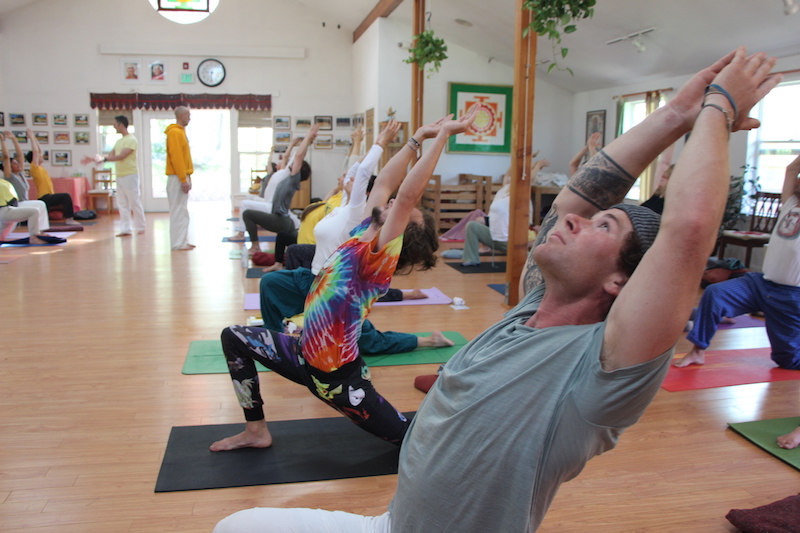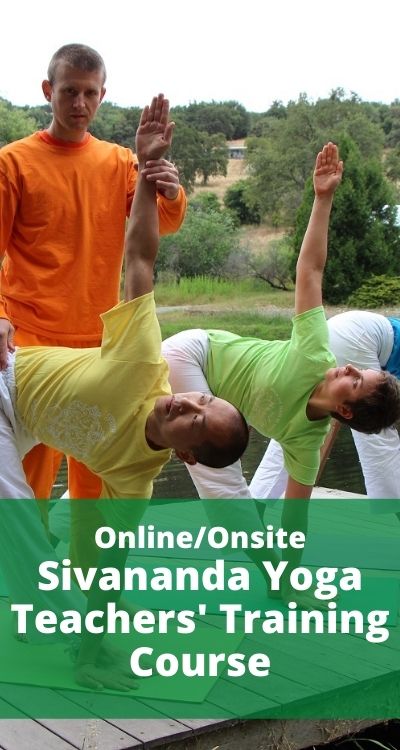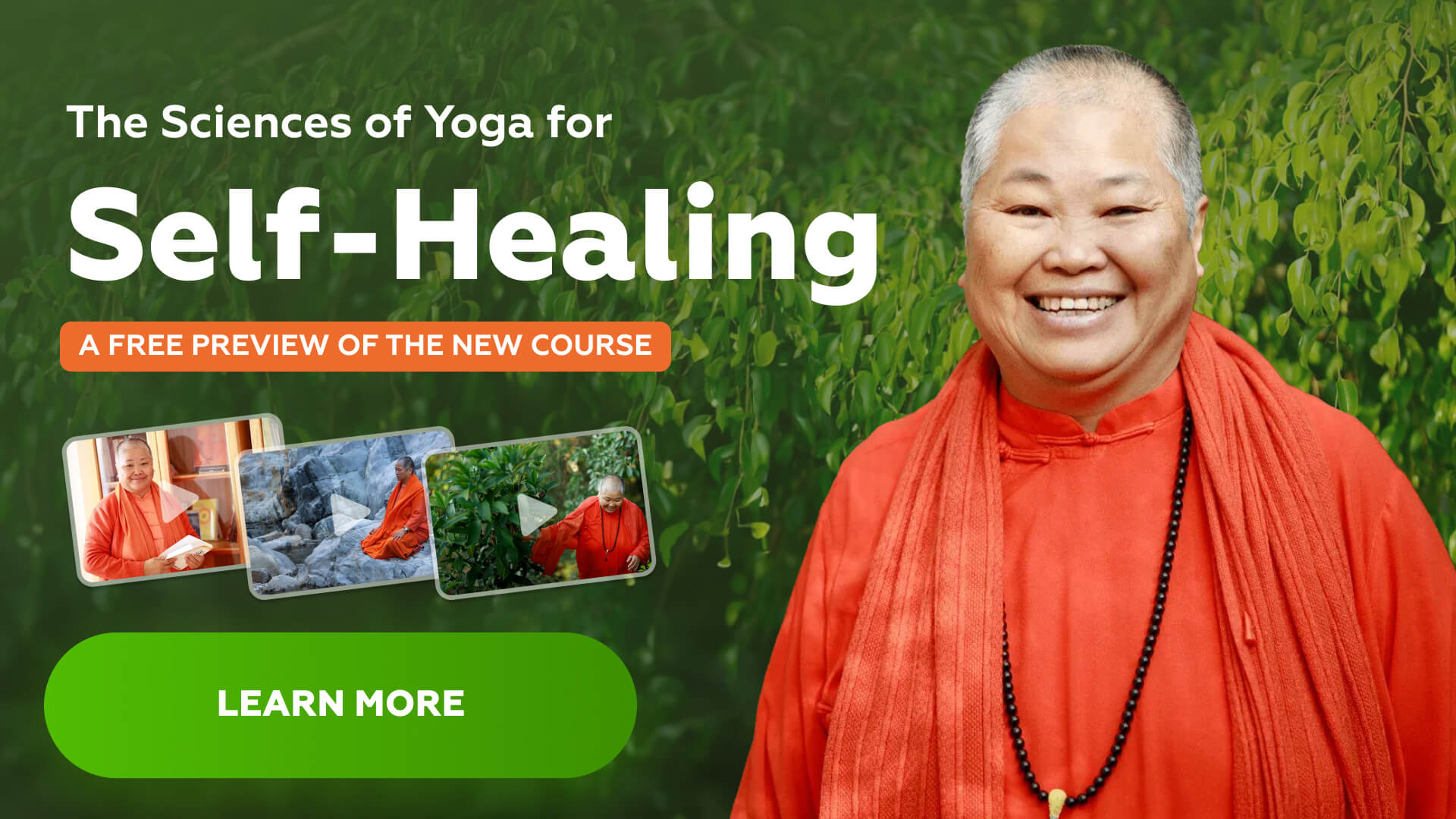“Your inherent nature is joy, ānanda, which is eternal. That is the message of yoga and vedānta.” – Swami Vishnudevananda
The 3 Gunas
Yoga offers us valuable guidance on our journey towards peace of mind. The formula is simple and can be described as a way of working with the three gunas or qualities of nature: 1) break through the tamas; 2) calm down the rajas; and 3) nourish the sattva.
All the objects of this universe contain the three gunas. The gunas operate on the physical, mental, and emotional levels and obscure our true nature, veiling the Light within. We become attached to physical conditions, stuck in stressful thought patterns, and feel unable to free ourselves from repeated negative emotions.

The light of consciousness, the Atman, reflects through the physical body, the mind and its emotions, just as a brilliant and pure crystal has no color of its own. When a colored object is brought near, it reflects the same color and appears to be that color—blue, red or whatever it may be. In the same way, the Atman is colorless and without qualities yet is veiled by the physical body and mind.
Yoga teaches us that we are neither the body nor mind. We are not our thoughts. The gunas are only veils to our true Divine nature, the Light of Atman.
We must break through tamas
Tamas is resistance to change. The mind seeks stability in the face of constantly changing circumstances (karmas), finding security in addiction to food, alcohol, relationships, and other kinds of behaviors. Without the capacity to discriminate good from bad, we become dependent on external objects and ways of thinking. We may not even like the thing but will choose it anyway out of apathy and ignorance. Tamas veils the Self, providing only a dim view of our true nature. We must make a conscious choice to extract ourselves from Tamas. It takes a good strong kick to move the mind from its tendencies.

We must calm down rajas
Rajas is forceful change. Rajas is ego-driven toward the external, actively engaging the world. Its extreme is to control situations and to meet expectations. One directs their energy outward to effect change that reflects a certain prescribed vision.
Rajas is the energy of action and passion, and of external projection. It singles out an aspect of life that the ego likes and goes towards it to the exclusion of everything else. We become attached to our actions. It is said that fulfilling one desire only reinforces that desire and leads to ten new desires. When these conditions are not met, one falls into disappointment and disillusionment (tamas).

We must nourish sattva
Sattva is wisdom to accept change. We accept that change is in God’s hands and that we do not control change. Sattva is to know that we do not know. Sattva reveals, allowing us to penetrate into the true picture of reality. It is the energy of moving inward and upward, letting go of our attachment to external objects and ever-changing outcomes.
Sattva allows us to see the mind’s tendencies with clarity. With more balance and harmony in our mind, we remain peaceful in the face of difficulty, allowing ourselves to make wise choices rather than reacting to situations beyond our control.
To overcome the egoistic veils of ambition, pride, projections and opinions, desires and expectations, we must nourish sattva through selfless service, devotion, control of the senses and mind, and meditation on the Self. We must learn to detach from external conditions, to question our mind’s thought patterns, and to stop functioning out of habitual conclusions.

Summary
Our journey is to transform ourselves from negative to positive, from restlessness to peace, from darkness to light. Peace of mind is difficult to attain because our minds are always changing. Like the woman who has lost her needle inside of her house, but looks for it outside, we restlessly seek for happiness outside when all the time, the Truth lies within.
Swami Sivananda says, “Fear not. Grieve not. Worry not. Your essential nature is peace. Thou art an embodiment of peace. Know this. Feel this. Realize this.”
Questions for your Self-study
- How do you react to change?
- Do you try to control your environment? The situation? Others?
- Do you find that change causes stress? If so, what aspect of change causes you stress?
- What are your Yoga practices to nourish sattva?
You can leave answers to the questions in the comments section below.
Other articles of interest:
Author

Swami Dharmananda is assistant director of the Yoga Farm for many years and is in charge of the karma yoga program. He is a faculty of the Sivananda Institute of Health (SIHY) and is one of the main teachers of Yoga Philosophy and Meditation at the Ashram. He took sannyas vows in 2013 and is keenly interested in yoga psychology and philosophy, presenting the classical teaching in a practical and accessible way to people of all faiths and backgrounds.





I react to change in a positive way when I have enough Prana, when my Prana level is low I tend to react with apathy or a outburst, which i soon recognize as the opposite of the response I would like to offer.
I sometimes try to control the environment, situation, and/or others when I am not controlling my own mind. It seems easier to look outward and see all of the things that can be fitted around my desired experience. I feel better when I become aware and remember that when I fit what is around me, life is much more smooth.
Change causes stress and that feels good so i can grow, as long as I breathe consciously with the change and not push it away, it seems to expand and manifest quicker in a more pleasant way.
My Yoga practices to nourish sattva include and are not limited to: Kirtan, Japa, and the synthesis of the 4 Paths of Yoga
🙏💛☀️
Jai Gurudev!
Thank you Radha